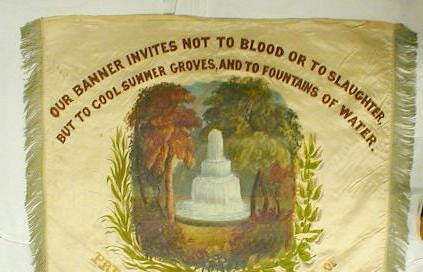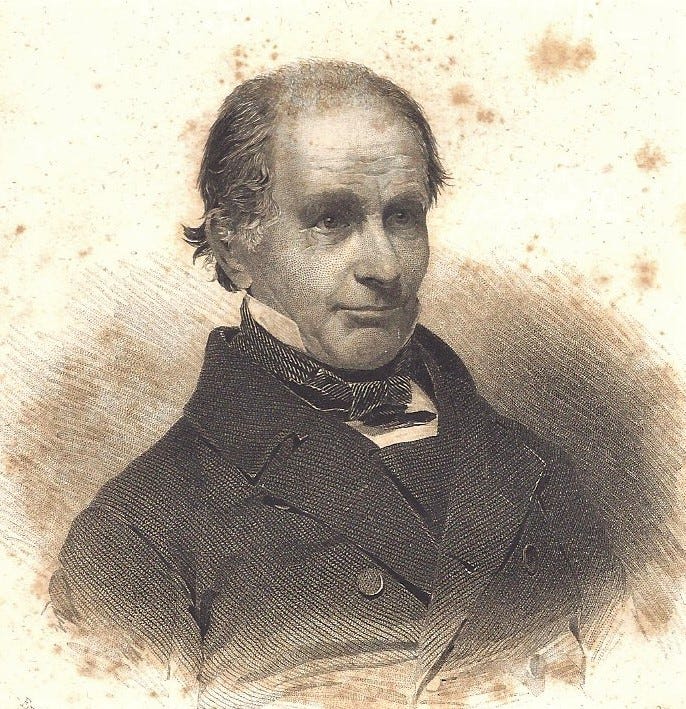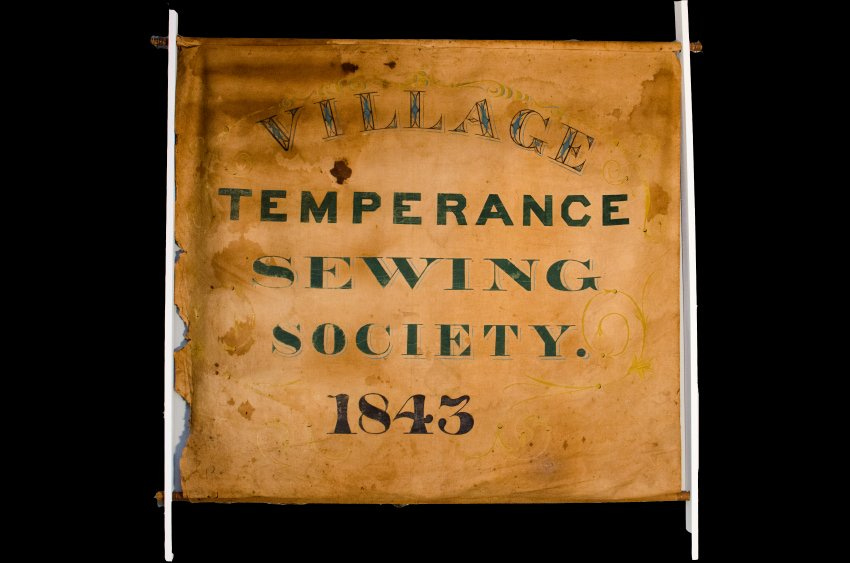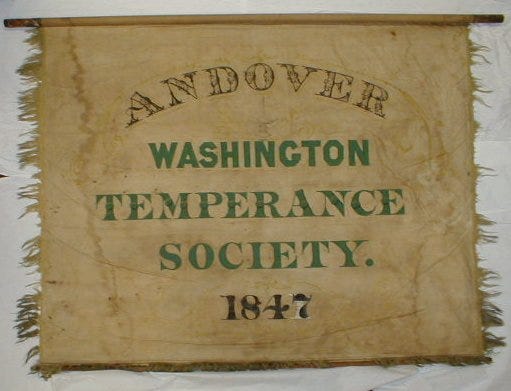A drink of water that is.
From the very early days of this country, drinking alcoholic beverages played an important part. In 1799, George Washington produced 11,000 gallons of whiskey at his Mount Vernon distillery, one of the largest in the country. Widespread drinking of “ardent spirits” was a fact of life. It was often thought to be healthier to drink distilled spirits that possibly contaminated water. Following the Revolutionary War, drinking increased, resulting in economic and social problems.
The temperance movement in America began early in the 1800s in response to the growing problem of drinking. The movement spread rapidly in New England through the influence of churches. Massachusetts and Andover were part of the beginning. In 1813, The Massachusetts Society for the Suppression of Intemperance was founded in Boston. This goal of this Society was not complete abstinence, but “To suppress the frequent use of ardent spirits and its kindred vices, profaneness and gaming, and encourage and promote temperance and general morality.”
Reverend Dr. Justin Edwards (1785-1853), the young pastor of Andover’s South Parish Church was concerned for the morality of his congregation. He had been trained at the Andover Theological Seminary in its strong Calvinist teachings. In 1814, he began the Andover South Parish Society for the Reformation of Morals. In The History of South Church in Andover Massachusetts, Julie Pike states that the Parish Society was “aimed primarily at the evils of profanity, Sabbath breaking and intemperance.”
Edwards proposed to fight these evils by:
“personal influence and example; conversation about them in families and in neighborhoods; support of the tithingmen; and paying more attention to children and by doing more for them.”
As far as the effect that the Parish Society had on intemperance, Sarah Loring Bailey in Historical Sketches of Andover: (comprising the Present Towns of North Andover and Andover) wrote that Dr. Edwards reported “A few years ago $15,000 were expended in this town for ardent spirits in a year, $8,000 more than was paid for the support of the gospel, and of all the schools, highways,State and county taxes, and all other town expenses. The people of last year did not probably expend one third of that sum. Ardent spirits, in the respectable part of the community, are becoming unfashionable …”
Previously it had been custom for laborers to have part of their wages paid in whiskey, Edwards went on to say, “ Many workmen are employed on condition of refraining from ardent spirits, and it is found that … they do more business…in a better manner than before.”
Somewhat ironically, in 1819, Amos Blanchard, a Deacon of South Church, listed purchases of rum for his workers as part of the expenses of building his house at 97 Main St. (now the home of the Andover Center for History and Culture.)
In 1824, an intoxicated Andover man was killed when he fell from his wagon. Reverend Edwards was moved by the loss of life. He delivered two sermons to his parishioners on the evils of drink. Edwards’ ideas spread and were echoed by others. In late 1825, Reverend Professor Leonard Woods, of the Andover Theological Seminary, Reverend Edwards, along with other religious educators met at Phelps House to discuss forming a society to address the needs for temperance.
In Boston in 1826, they met again with others including Lyman Beecher, Harriet Beecher Stowe’s father and a professor at the Theological Seminary, to form the American Society for the Promotion of Temperance. Known today as the American Temperance Society, it was the first U.S. social movement organization to gain national support for a reform cause.
The American Temperance Society advocated complete abstinence as the only way to stop drunkenness, not believing that moderation worked. By 1833, South Church and West Parish Church had instituted a requirement for all members to take an oath of temperance. In this case, abstention meant all liquor including whiskey, wine and fermented cider. There was wide-spread concern for the health, social and financial consequences of drinking.

Andover’s women formed temperance societies too. These groups were rooted in the belief that keeping busy and industrious was a way of combating the temptation of drink alcohol. The women of the Village Temperance Sewing Society made items for local charities as well as the foreign missions supported by the local churches. And they celebrated water as the chosen drink.
The call for total abstinence did have repercussions. Membership declined in many local societies and in the American Temperance Society. But in 1840, there was a resurgence. It was started through the unlikely actions of six men in Baltimore. They were drinking buddies who met every night at the same Baltimore tavern. The story is that one night they decided to go hear an evangelist who was delivering a speech nearby. The evangelist made an impression. The six men decided to take a pledge of abstinence and start a society. In honor of George Washington, they chose the name The Washington Temperance Society. Their pledge -
We whose names are annexed, desirous of forming a society for our mutual benefit, and to guard against a pernicious practice which is injurious to our health, standing, and families, do pledge ourselves as gentlemen that we will not drink any spirituous or malt liquors, wine or cider.
The society took a compassionate approach curing intemperance. Men would travel around the country sharing real life stories of alcohol abuse. By the end of 1841, it was reported that 200,000 Americans had signed the pledge. The Martha Washington Society was started that year to assist women. But the societies did meet with some resistant from religious leaders. Churches rejected the Washington movement because it did not recognize religion as a necessity to achieving abstinence. The movement died out although some of the tenets live on today through Alcoholics Anonymous.
And we have a banner that marks Andover’s involvement.
Thanks for reading!
Help spread the word about History Buzz by liking, commenting, sharing, and subscribing. Share the Buzz!
Resources:
The History of South Church in Andover Massachusetts by Julie Pike
Historical Sketches of Andover (comprising the Present Towns of North Andover and Andover), Massachusetts by Sarah Loring Bailey
Andover Preservation Commission website
189 Main Street – Phelps House
71 Main Street – Home of Rev. Edwards
193 Main Street - Home of Reverend Dr. Leonard Woods
Websites:
www.alcoholproblemsandsolutions.org/massachusetts-society-for-the-suppression-of-intemperance/
prohibition.themobmuseum.org/the-history/the-road-to-prohibition/the-temperance-movement/
www.britannica.com/event/Prohibition-United-States-history-1920-1933
https://socialwelfare.library.vcu.edu/religious/the-temperance-movement/










Tremendously interesting. Keep up the good work.